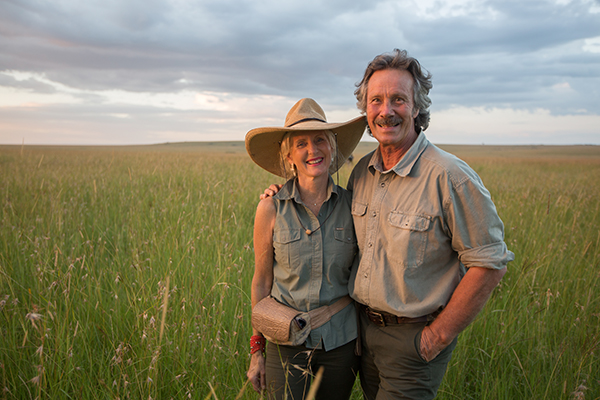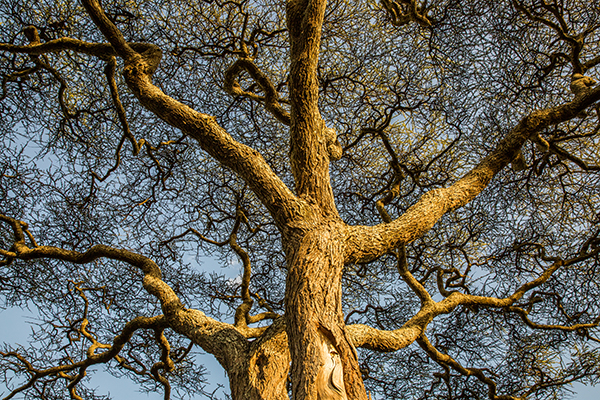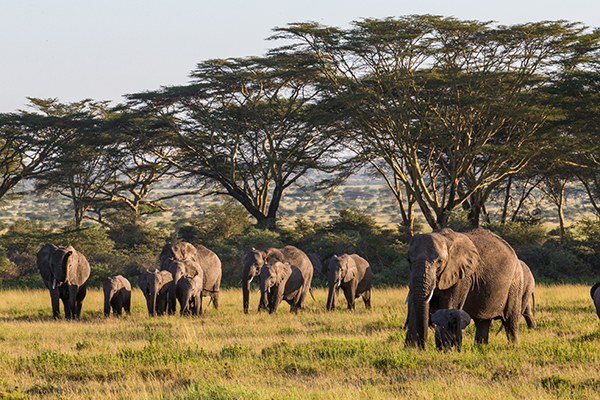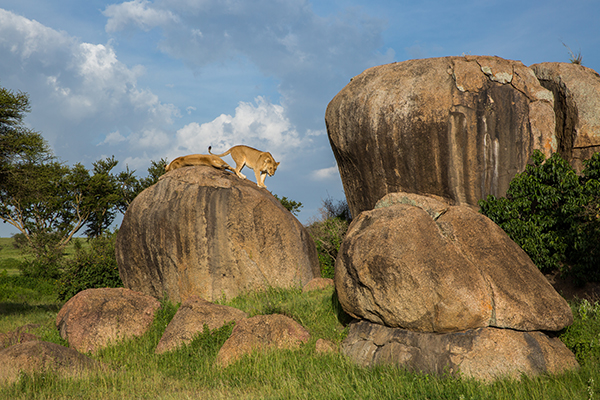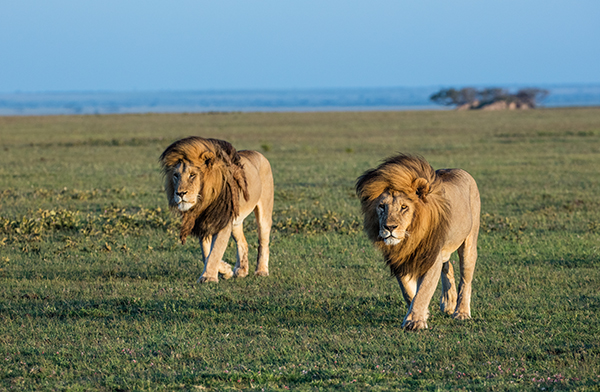Land of Endless Space: The wonder of the Serengeti
byJonathan and Angela Scott
In the 1980s I spent many happy months living out of my Toyota Landcruiser in the Serengeti National Park in Tanzania. My aim was to be as free as a bird, to sleep wherever dusk found me, not anchored to any one part of the vast stretch of land defined by the wandering of the nomadic herds of wildebeest, zebras and gazelles known to the world as the great migration. I had lived in the Maasai Mara – the dry season home of the migration – since 1977 and wanted to journey south to document their annual pilgrimage.
Now, thirty years after I last set eyes on the place known as Barafu Kopjes, Angie and I were back in the Serengeti hosting a group of fellow travellers to witness the birth of the wildebeest – the annual miracle of half a million calves born within a few weeks during January and March. We had chosen the safari specialists Asilia who own Rekero Camp situated in prime game viewing country along the Talek River in the Maasai Mara. Asilia have distinguished themselves with their environmentally friendly ethos and low key footprint, encouraging local people to benefit from wildlife based tourism by creating jobs and feeding back some of the profits in to community projects.
As we weaved our way through tall stands of acacia trees leading to Kimondo Camp after a long days drive from Arusha, we glimpsed a sight that left us speechless. The eight spacious tents overlooked a gentle valley of low lying grassland, painted a vivid green in the fading light where herds of wildebeest and zebras gathered in their thousands. The sounds of the wildebeest bulls grunting and honking and the zebras braying were amplified by the still air, reaching a crescendo as we emerged from our vehicles. After a feast of a dinner, we slipped in to beds warmed with hot water bottles to mask the nip in the air, dozing off to the cacophony of animal sounds. Each day we would find the valley bare of animals – and each evening we gloried in their return.
After three idyllic days at Kimono we headed for Namiri Plains situated at the eastern edge of the park close to the place where I had lived with a pack of wild dogs known as the Naabi Pack when they denned at Barafu Kopjes. We soaked up the cooling breeze that gusted through our open vehicle as we beat a path across the widest stretch of savannah you will ever set eyes on. Ahead of us a beautiful kopje (as the granite outcrops are known) emerged from the grass with the perfect flat topped acacia offering shade for our picnic lunch.
Namiri Plains was all we had hoped for. The staff were welcoming and attentive, always at hand to serve soft drinks and tea or coffee or a cold beer for the thirsty after a long game drive. We set off early each morning fortified by a tasty bowl of porridge to sustain us over the next few hours as we searched for big cats, stopping to enjoy the myriad species of birdlife along the way: a plethora of lesser kestrels hovered overhead while Montague’s and Pallid harriers criss-crossed the grasslands in search of prey. The wild dogs have vanished from these open plains – hardly surprising perhaps with lions now so evident at Barafu – but there were other highlights to enjoy. One morning we spotted a cheetah mother with three four-month-old-cubs who paused for a moment sphinx-like on one of the kopjes scanning the surrounding plains before continuing on their way through the long grass. Each afternoon towering cloud heads offered the promise of rain. But each morning the wind would blow and the sky would transform in to the seamless blue of the previous morning.
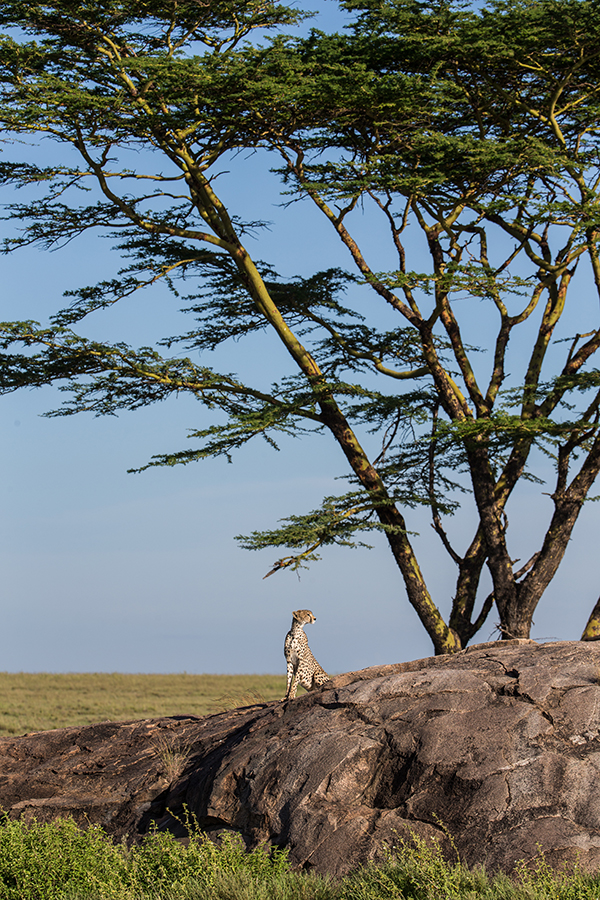
The Serengeti reawakens a sense of wonder in the human soul: a panorama of rocky outcrops and acacia trees, of grass and sky stretching for as far as the eye can see. It is achingly beautiful at any time of the year, whether the harsh, desolate land of the dry season or the lush, green, verdant pastures of the rains. When pioneering conservationists Dr Bernhard Grzimek and his son Michael wrote their landmark book and film in 1959 they named it Serengeti Shall Not Die. The Serengeti certainly seems very much alive today, and with Tanzania’s new President, John Magufuli, having already made a name for his tough stand on corruption and integrity we live in hope that further talk of a Serengeti Highway destined to ferry 3,000 vehicles a day across the northern Serengeti – alongside a railway – will remain just talk.
The post Land of Endless Space: The wonder of the Serengeti appeared first on Asilia Africa.
More Experiences Articles

Experience A Slow Safari
26 July 2019By Anwynn Louw – Digital Marketing Assistant The Art of Slow Travel – “Slow T...

BBC One: Serengeti – The Elephant
25 July 2019By Britta Foulis – Content Marketing Manager BBC One’s latest mi...

Four Great Locations For A Family Reunion Safari In East Africa
19 July 2019By Anwynn Louw – Digital Marketing Assistant Planning a multigenerational saf...

BBC One: Serengeti – The Baboon
17 July 2019By Britta Foulis – Content Marketing Manager BBC One‘s latest mi...

